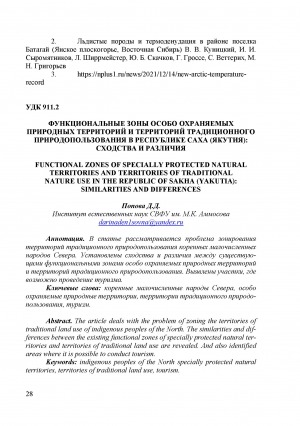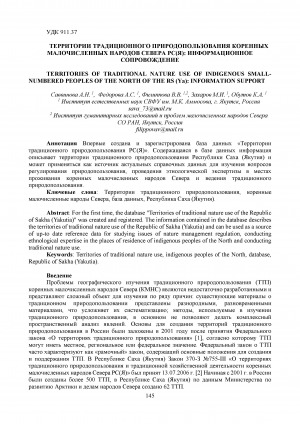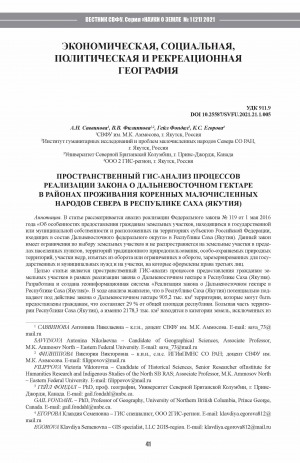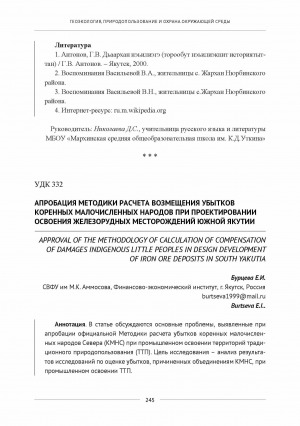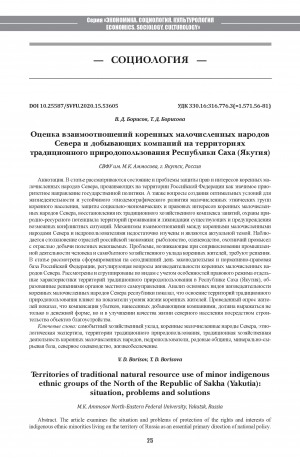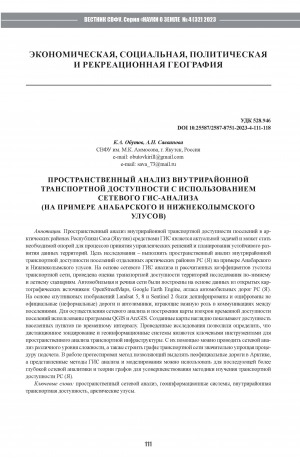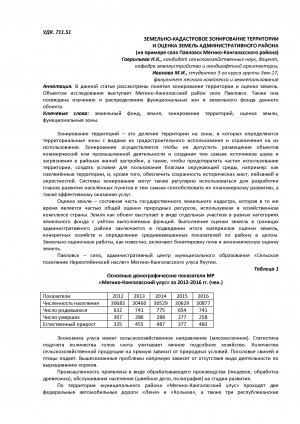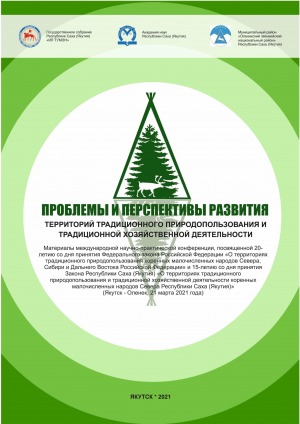Allocation of functiomal zones in the territories of traditional land use "Bellet" and "Anamy"
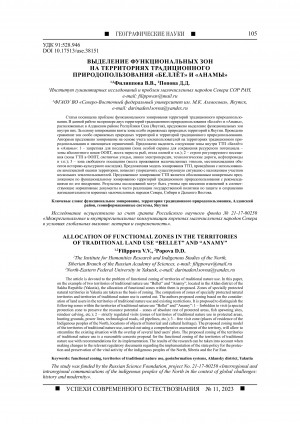
Выделение функциональных зон на территориях традиционного природопользования "Беллёт" и "Анамы"
Allocation of functiomal zones in the territories of traditional land use "Bellet" and "Anamy"
Статья в журнале
Русский
502.1:528.946(571.56-37)
функциональное зонирование; территории традиционного природопользования; Алданский район; геоинформационные системы; Якутия; functional zoning; territories of traditional nature use ; geoinformation systems; Aldansky district; Yakutia
География / Экономическая и социальная география
С. 105-114
Успехи современного естествознания = Advances in current natural sciences: научный журнал
Москва, Издательский дом "Академия Естествознания"
Основан в 2001 г.
Выходит ежемесячно
В журнале публикуются статьи, обладающие научной новизной, представляющие собой результаты завершенных исследований, проблемного или научно-практического характера. Журнал ориентируется на профессиональных работников сельского хозяйства, экологов, медицины, научных сотрудников, педагогов, специалистов в смежных областях знаний, занимающихся изучением наук о земле.
Журнал является рецензируемым, входит в систему РИНЦ
Успехи современного естествознания / учредитель: издательский дом "Академия Естествознания" ; главный редактор М. Ю. Ледванов. – Москва : Издательский дом "Академия Естествознания", 2023, – N 11. – 198 с.
The article is devoted to the problem of functional zoning of territories of traditional nature use. In this paper, on the example of two territories of traditional nature use "Bellet" and "Anamy", located in the Aldan district of the Sakha Republic (Yakutia), the allocation of functional zones within them is proposed. Zones of specially protected natural territories in Yakutia are taken as the basis of zoning. The comparison of zones of specially protected natural territories and territories of traditional nature use is carried out. The authors proposed zoning based on the consideration of land users in the territories of traditional nature use and existing restrictions. It is proposed to distinguish the following zones within the territories of traditional nature use “Bellet” and “Anamy”: 1 - forbidden to visit (a special protection zone to preserve the resource potential - zones of absolute rest of protected areas, fish spawning sites, reindeer calving, etc.); 2 - strictly regulated visits (zones of territories of traditional nature use in protected areas, hunting grounds, power lines, technological roads, oil pipelines, etc.); 3 - free visit zone (places of residence of the Indigenous peoples of the North, locations of objects of historical and cultural heritage). The proposed zoning model of the territories of traditional nature use, carried out using a comprehensive assessment of the territory, will allow to streamline the existing situation with the overlap of several land users’ plots. The proposed zoning of the territories of traditional nature use is a reasonable concrete proposal for the functional zoning of the territories of traditional nature use with recommendations for its implementation. The results of the research can be taken into account when making changes to the relevant regulatory documents regarding the implementation of the state policy for the protection and preservation of the vital activity of the indigenous peoples of the North, Siberia and the Far East. The study was funded by the Russian Science Foundation, project No. 21-17-00250 ҺInterregional and intraregional communications of the indigenous peoples of the North in the context of global challenges: history and modernityһ.
Филиппова, В. В. Выделение функциональных зон на территориях традиционного природопользования "Беллёт" и "Анамы" / Филиппова В. В., Попова Д. Д. ; Институт гуманитарных исследований и проблем малочисленных народов Севера, Северо-Восточный федеральный университет им. М. К. Аммосова // Успехи современного естествознания. - 2023. - N 11. - С. 105-114. - DOI: 10.17513/use.38151
DOI: 10.17513/use.38151
Войдите в систему, чтобы открыть документ
